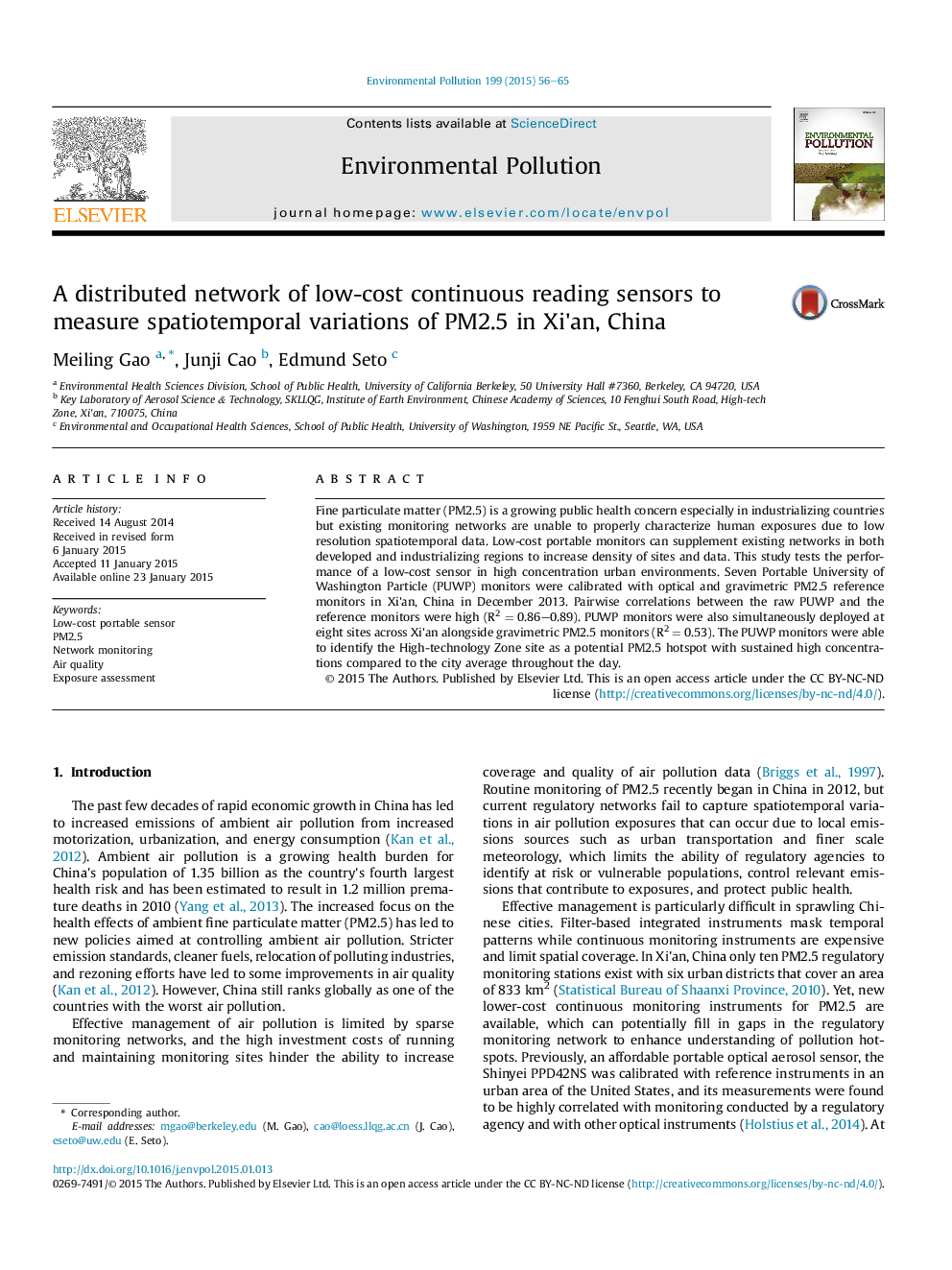| Article ID | Journal | Published Year | Pages | File Type |
|---|---|---|---|---|
| 6316926 | Environmental Pollution | 2015 | 10 Pages |
â¢A $15 portable PM sensor demonstrated high correlations with reference monitors.â¢The sensor can be deployed in high PM2.5 urban environments.â¢The sensor can improve spatiotemporal resolution of data from existing monitoring networks.
Fine particulate matter (PM2.5) is a growing public health concern especially in industrializing countries but existing monitoring networks are unable to properly characterize human exposures due to low resolution spatiotemporal data. Low-cost portable monitors can supplement existing networks in both developed and industrializing regions to increase density of sites and data. This study tests the performance of a low-cost sensor in high concentration urban environments. Seven Portable University of Washington Particle (PUWP) monitors were calibrated with optical and gravimetric PM2.5 reference monitors in Xi'an, China in December 2013. Pairwise correlations between the raw PUWP and the reference monitors were high (R2Â =Â 0.86-0.89). PUWP monitors were also simultaneously deployed at eight sites across Xi'an alongside gravimetric PM2.5 monitors (R2Â =Â 0.53). The PUWP monitors were able to identify the High-technology Zone site as a potential PM2.5 hotspot with sustained high concentrations compared to the city average throughout the day.
